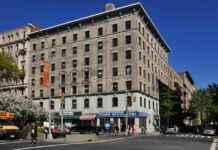A groundbreaking study led by scientists at the University of Leeds has shed light on the potential benefits of reintroducing wolves to the Scottish Highlands. The research, which focuses on the impact of wolves on native woodlands, suggests that this initiative could help absorb and sequester an additional one million tons of carbon dioxide annually. This discovery has significant implications for climate change mitigation efforts and biodiversity conservation.
The study highlights the pressing need to address the interconnected crises of climate change and biodiversity loss through innovative solutions. Dominick Spracklen, a professor at the University of Leeds, emphasizes the importance of restoring degraded ecosystems by reintroducing keystone species like wolves. By allowing natural processes to unfold, we can not only recover biodiversity but also mitigate climate change impacts.
Modeling the Impact of Wolves
To assess the potential impact of reintroducing wolves to the Scottish Highlands, the research team used a sophisticated predator-prey model. By simulating wolf populations in four key areas of Scottish Wild Land, the scientists projected that a total of 167 wolves could be introduced. This population size would be sufficient to control red deer populations, which are currently inhibiting the natural regeneration of woodland trees.
With the presence of wolves keeping red deer numbers in check, native woodlands could expand significantly, absorbing 1.1 million tons of carbon dioxide annually. This represents a substantial contribution to the United Kingdom’s carbon removal target and aligns with the goals of achieving net-zero emissions by 2050. The economic value of this carbon sequestration effort is estimated at $194,554 per wolf, underscoring the ecological and financial benefits of wolf reintroduction.
Implications for Scotland’s Ecosystem
Scotland’s decision to eradicate wolves two and a half centuries ago had profound ecological consequences, leading to the unchecked growth of red deer populations. Despite ongoing management efforts, red deer numbers have soared, posing a threat to native woodlands. The decline of Scotland’s woodland cover, currently at a mere four percent of the country’s land area, underscores the urgent need for ecosystem restoration.
While efforts to exclude deer from regeneration areas have shown some success, more holistic solutions are needed to address the root cause of the problem. The reintroduction of wolves, a keystone species in the ecosystem, could provide a sustainable and effective way to restore balance and diversity to Scotland’s natural landscapes.
The research team’s findings also highlight the broader implications of wolf reintroduction beyond carbon sequestration. From reducing deer-vehicle accidents to curbing the spread of Lyme disease carried by deer, the presence of wolves could yield a range of ecological and economic benefits. Moreover, the potential for ecotourism and public engagement underscores the importance of considering diverse stakeholder perspectives in conservation efforts.
In conclusion, the study on wolf reintroduction in the Scottish Highlands offers a compelling case for embracing nature-based solutions to address the intertwined challenges of climate change and biodiversity loss. By harnessing the ecological expertise of keystone species like wolves, we can pave the way for a more resilient and sustainable future for Scotland’s ecosystems. As we navigate the complexities of environmental conservation, the wisdom of nature itself may hold the key to a brighter tomorrow.














